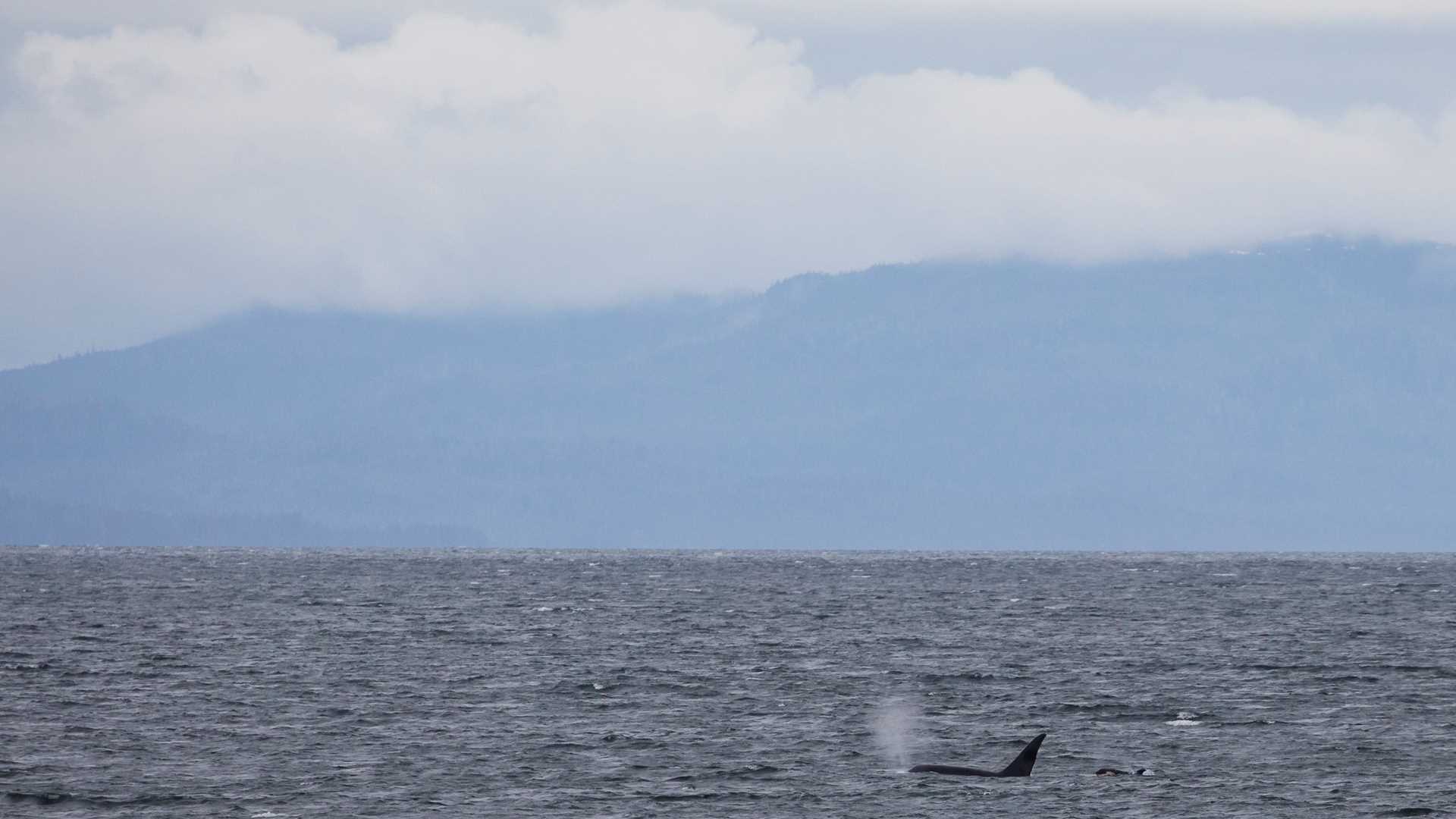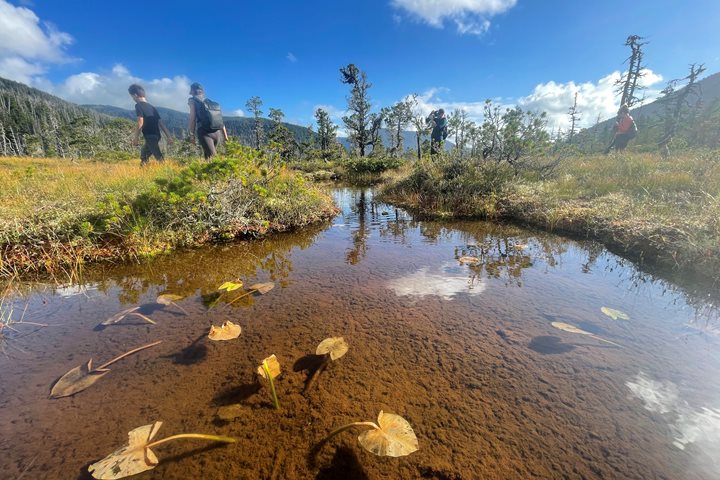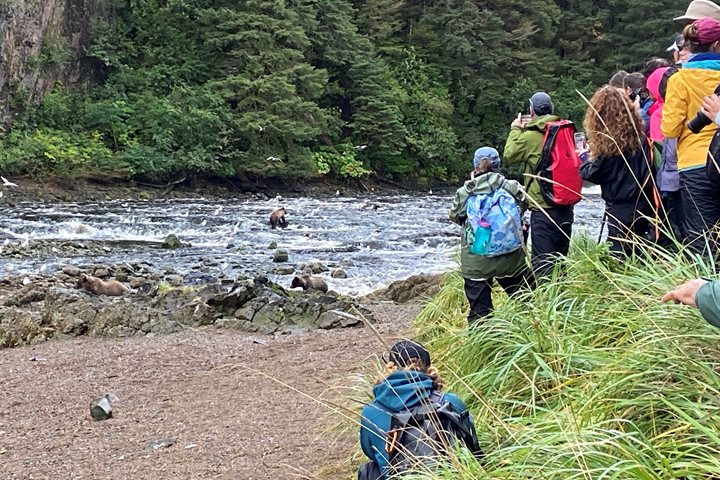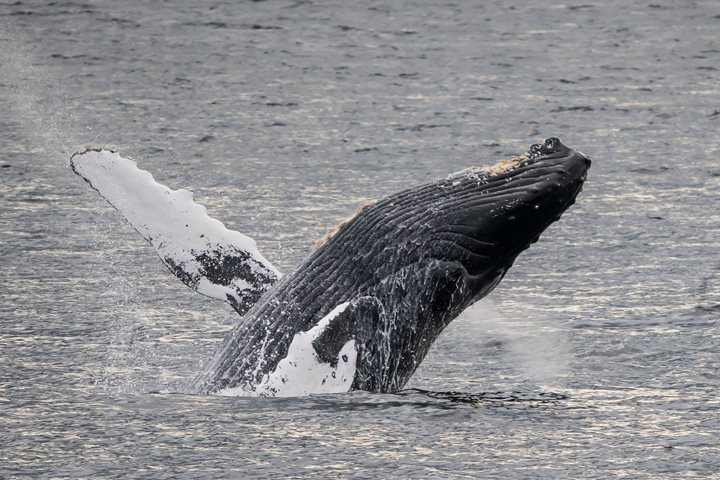We spent last night and the early morning in Chatham Strait, an enormous fjord carved by the tremendous glaciers of the Pleistocene Ice Ages. Chatham Strait is the longest and deepest fjord in North America. it extends about 150 miles and reaches depths of more than 2,000 feet.
During the Wisconsin Ice Age, about 15,000 years ago, the ice lay more than a mile thick over this area and its crushing weight depressed the Earth’s surface here more than 1,000 feet (300 meters). The moving, flowing glacial ice followed the natural faults and lines of weakness in the bedrock of the region, gouging out deep, broad valleys that were later flooded by the sea when the ice finally melted. These flooded valleys now form the channels of the Inland Passage that surround the islands and cut deep into the mainland and provide us with fantastic waterways in which we can explore Southeast Alaska.
Before breakfast, we awoke to the announcement that killer whales had been sighted. There were six to eight individuals, but they were spread out a bit, which made it hard to be sure of the number. They were surely in constant contact with one another. The two younger ones seemed especially exuberant, and we were treated with several impressive breaches by one or both of them.
Naturalist Mike Greenfelder identified them as “transients,” which means they were probably hunting for harbor seals that frequent this area. The other population of killer whales in these waters are known as “residents,”’ and they specialize in consuming fish, not marine mammals.
By the end of breakfast, we reached Hanus Bay in the northeastern region of Baranof Island and anchored the ship. A landing was made on a pebble sand beach and most people chose to do a four-mile-long hike in the magnificent Pacific temperate coastal rainforest. The naturalists led walks along a well-maintained trail that parallels a beautiful stream that flows from picturesque Lake Eva.
In late Summer, the stream is packed with salmon as they make their way upstream to the lake, at which time brown bears and eagles enjoy a time of plenty as they feast on the fish. The forest here is composed mostly of Sitka spruce trees and western hemlock trees, with a dense understory of various berry bushes. Some of the trees are gigantic and gave us a better understanding of what an ‘old growth forest’ is all about. Occasionally, the melodious and haunting calls of hermit thrushes echoed through the forest.
Later, we got out the kayaks and also gave people the opportunity to explore the shallow waters in Hanus Bay and the estuary that arises from the Lake Eva stream. By the time we departed, the tide had dropped and exposed the incredibly rich tidal flats that are covered with mussels, barnacles, bladder wrack (rock weed), and all the marine life associated with them. All this makes for nutritious bear food (as evidenced by bear scat along the trail).
The afternoon was spent transiting Peril Strait and Sergius Narrows, the constricted, twisting waterway that lies between Baranof and Chichagof Islands. It was fun watching the currents, upwellings, and whirlpools in the turbulent water as we made our way through this waterway all the way to the Pacific Ocean to reach our voyage’s final destination, Sitka.







